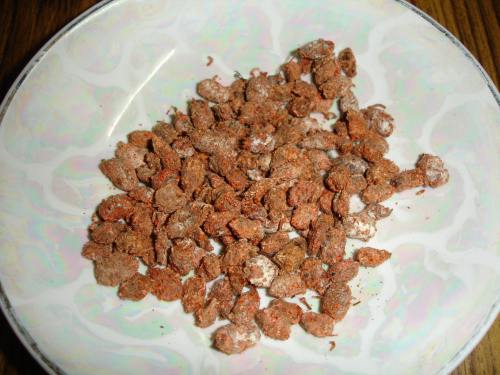Trombidiidae on:
[Wikipedia]
[Google]
[Amazon]
Trombidiidae, also known as red velvet mites, true velvet mites, or rain bugs, are small
PDF
/ref> They are active predators as grown adults. As early
 The oil from the red velvet mite '' Trombidium grandissimum'' is used in traditional Indian medicine to treat paralysis.Oudhia, P. 1999b
The oil from the red velvet mite '' Trombidium grandissimum'' is used in traditional Indian medicine to treat paralysis.Oudhia, P. 1999b
Traditional medicinal knowledge about red velvet mite ''Trombidium'' sp. (Acari: Trombidiidae) in Chhattisgarh.
''Insect Environment'' 5(3):113.
arachnid
Arachnida () is a class of joint-legged invertebrate animals (arthropods), in the subphylum Chelicerata. Arachnida includes, among others, spiders, scorpions, ticks, mites, pseudoscorpions, harvestmen, camel spiders, whip spiders and vinegar ...
s (eight-legged arthropods) found in plant litter
Plant litter (also leaf litter, tree litter, soil litter, litterfall or duff) is dead plant material (such as leaves, bark, needles, twigs, and cladodes) that have fallen to the ground. This detritus or dead organic material and its constitue ...
and are known for their bright red color.
While adults are typically in length, some, such as the genus '' Dinothrombium'', may reach up to .
Their life pattern is in stages similar to other members of the Prostigmata
The Prostigmata is a suborder of mites belonging to the order Trombidiformes, which contains the "sucking" members of the "true mites" (Acariformes).
Many species are notorious pests on plants. Well-known examples of prostigmatan plant par ...
: egg, pre-larva, larva, protonymph, deutonymph, tritonymph and adult (male or female). They usually have only one breeding cycle per year.Zhang, Zhi-Qiang (1998) Biology and ecology of trombidiid mites (Acari: Trombidioidea) Experimental & Applied Acarology 22:139–15/ref> They are active predators as grown adults. As early
instar
An instar (, from the Latin '' īnstar'', "form", "likeness") is a developmental stage of arthropods, such as insects, between each moult (''ecdysis''), until sexual maturity is reached. Arthropods must shed the exoskeleton in order to grow or ...
s they are often parasites of insects and other arachnids.
One well known species from Europe, Asia, and North Africa is ''Trombidium holosericeum
''Trombidium holosericeum'' is a species of mite in the genus '' Trombidium''. It occurs in Europe, Asia, and North Africa and is commonly confused with other red mite species.
Description
This species is one of the largest mites in northern te ...
''. The systematics of this group has been in flux and many former subfamilies of this are now raised to families within the Trombidioidea.
List of genera
According to Joanna Makol * Trombidiinae Leach, 1815 ** '' Allothrombium'' Berlese, 1903 synonyme ''Corethrothrombium'' Oudemans, 1928 & ''Mongolothrombium'' Feider, 1973 ** '' Andinothrombium'' Makol, 2007 ** '' Andrethrombium'' Makol, 2007 ** '' Arknotrombium'' Haitlinger, 2007 ** '' Azaritrombium'' Saboori, Bagheri & Haddad, 2005 ** '' Caenothrombium'' Oudemans, 1927 ** '' Calctrombidium'' Haitlinger, 2003 ** '' Clinotrombium'' Southcott, 1986 ** '' Darjeelingia'' Makol, 2007 ** '' Dinothrombium'' Oudemans, 1910 ** '' Dolichothrombidium'' Feider, 1945 ** '' Iranitrombium'' Saboori & Hajiqanbar in Saboori, Hajiqanbar & Irani-nejad 2003 ** '' Mesothrobium'' Hirst, 1926 synonyme ''Austrothrombium'' Womersley, 1934 ** '' Monotrombium'' Zhang in Zhang & Norbakhsh 1995 ** '' Oskootrombium'' Saboori, Bagheri & Haddad 2006 ** '' Paratrombium'' Bruyant, 1910 ** '' Pollicotrombium'' Southcott, 1986 ** '' Robauxthrombium'' Makol, 2007 ** '' Ronaldothrombium'' Makol, 2007 ** '' Trombidium'' Fabricius, 1775 synonyme ''Kaszabothrombium'' Fieder, 1973 ** '' Variathrombium'' Robaux, 1969 ** '' Wohltmannella'' Makol, 2007 ** '' Xenothrombium'' Oudemans, 1927Human use
 The oil from the red velvet mite '' Trombidium grandissimum'' is used in traditional Indian medicine to treat paralysis.Oudhia, P. 1999b
The oil from the red velvet mite '' Trombidium grandissimum'' is used in traditional Indian medicine to treat paralysis.Oudhia, P. 1999bTraditional medicinal knowledge about red velvet mite ''Trombidium'' sp. (Acari: Trombidiidae) in Chhattisgarh.
''Insect Environment'' 5(3):113.
References
{{Taxonbar, from=Q853453 Acari families